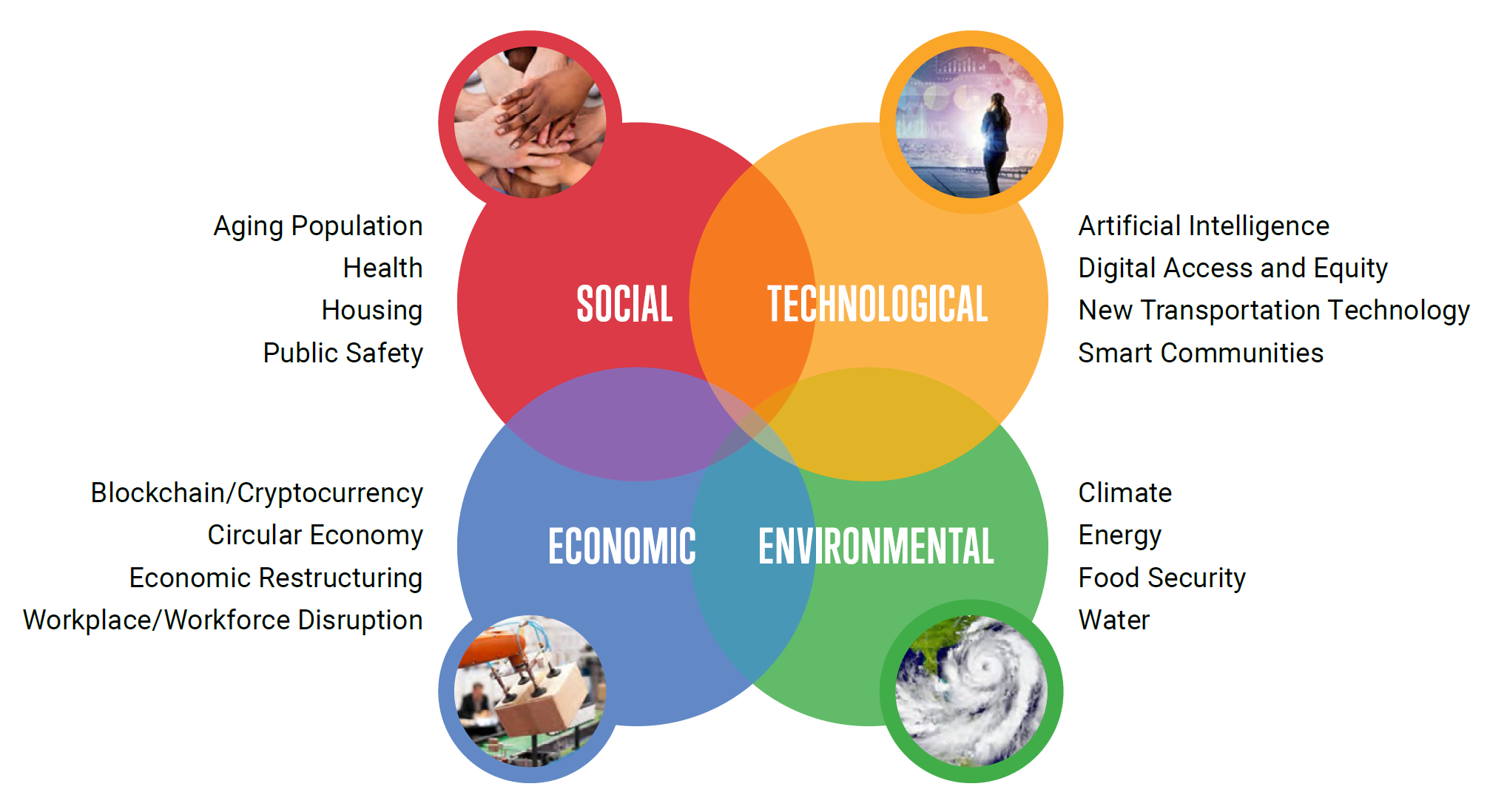North Carolina communities, like communities across the nation, are experiencing the effects of disruptive, accelerating change. A key question for local governments is: how can we address the myriad of forces that are impacting us now or may impact us in the future?
To help answer this question, the UNC School of Government (SOG) has developed a program called Growing Practical Solutions North Carolina (GPSNC). Funded by the Civic Federal Credit Union and coordinated by SOG’s ncIMPACT Initiative, this program is designed to foster a culture of innovation that increases the capacity of local communities to respond to disruptive change. Ben Hitchings and I were pleased to assist SOG in developing GPSNC’s first product: Managing Disruption in a Rapidly Changing World: A Briefing Book for Decision-Makers in North Carolina. This report builds on Triangle Trends Report: Tracking Disruption (2022), which Ben and I prepared for the Triangle J (now Central Pines Regional) Council of Governments.
While designed for North Carolina communities and decision-makers, the Managing Disruption briefing book provides a model that can be adapted for use elsewhere in the nation. It describes a framework for understanding drivers of change, organized into four broad, interconnected categories: social, technological, economic, and environmental. These drivers vary in their levels of development and impacts on communities. Some, like housing need and affordability, are well-established. Others, like artificial intelligence, are emerging, meaning that their full impacts will be experienced in the future. Others, like autonomous vehicles, are in the early stages of development, with uncertain future trajectories. The basic premise is that communities need to address these drivers in a proactive, integrated manner (rather than the reactive, piecemeal one that is the norm) if they are to successfully prepare for and respond to change.

The briefing book presents concise write-ups on sixteen prominent drivers; identifies case studies and actions communities can take to address them; and provides links to resources with more detailed information. It also lays out a six-step process that local and regional governments can use to prepare a Community Readiness Plan. The purpose of this plan is to increase community resilience to the disruptive impacts of change, from shocks like the next pandemic to stresses like declining health and shifts in the economy.
With this resource in hand, decision-makers can identify the drivers of change that are most relevant to their community; assess their impacts and develop implementation measures that will help them best respond; and work systematically to better prepare for the future. This includes injecting more of a future focus into daily operations, making more strategic investments, and putting plans in place to better manage the next disruption. The ultimate goal is to empower communities to increase their capacity to weather the challenges of a rapidly changing world, and to seize the opportunities it presents.
